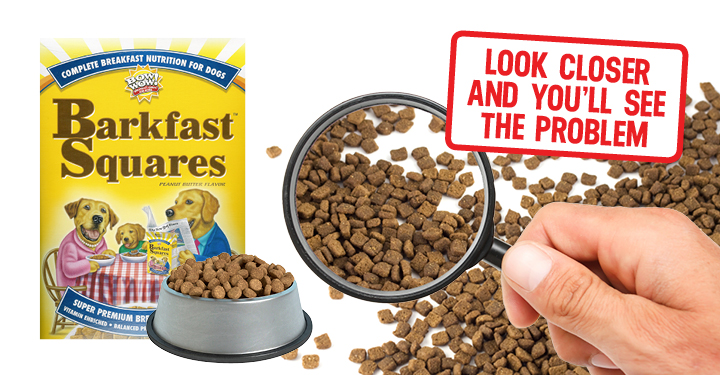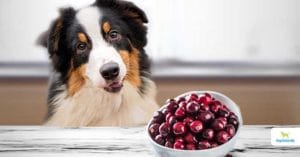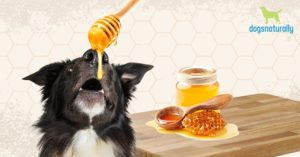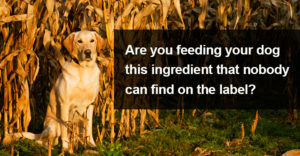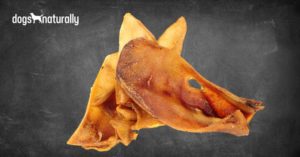Hundreds of consumer complaints were aimed at dog food manufactures in 2012 and dozens – perhaps hundreds – of dogs were harmed.
While many of these tainted jerky treats have been recalled, these most recent recalls are likely just another case of Chinese imports.
Fortunately, pet owners have become wiser since the melamine poisonings and massive recalls from 2007 and many are making decisions that will protect their pets. They have learned that quality control and food safety standards are shabby at best in many overseas and Chinese manufacturing plants and that even in the US, manufacturers have few safety and testing requirements.
Pet owners are wisely avoiding treats and foods made in China and that’s good. But despite avoiding these products, their dogs continue to die and become ill.
How can this happen when the food label says ‘made in the USA’?
The Tip Of The Iceberg
The label on your pet food or treat may conceal a little lie … and this lie could cost your pet his health or even his life. There is something inherently wrong with most processed foods that pet owners are unaware of.
The heating and processing that these foods undergo create a fundamental change that could have dangerous ramifications … it renders the food essentially dead. What goes into the food is not what comes out once it is heated, sterilized, irradiated and extruded … and nearly all dog foods will not meet AAFCO standards once they are heated.
As a consequence, the vitamins and minerals must be added back in for the food to pass AAFCO requirements. And this is where it starts to go wrong.
RELATED: Calling Bull$shit on prescription diets …
Enter The Premix
Back in 2007, the melamine that was poisoning dogs and cats was not added directly to the pet foods – it was found in the premix. The Chinese manufacturers added it to their premix to boost the protein content as cheaply as possible. Only when dogs and cats started dying – and the FDA was forced to begin testing the foods – did anyone become aware of the fact.
What made the recall so large was that it wasn’t limited to a single food manufacturer. Because they nearly all must rely on premixes, a large number of pet food manufacturers that purchased the same premix were affected. What this means is that switching your pet from one food to another doesn’t necessarily mean you have made any difference at all if your new food purchases the same premix.
How do you know if your food contains premix?
Look at the label.
On the right is a label from what many people consider a high-end kibble. See those vitamins, minerals and long chemical names that are listed at the bottom?
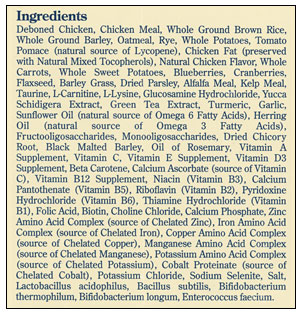
Those very likely came from a premix and that premix was very likely manufactured overseas. If the premix is not added to the food, your dog would become ill and under-nourished from eating the nutritionally dead contents. If the premix is added to the food, you are relying on foreign safety standards and are essentially playing roulette with your dog’s or your cat’s health.
Compare that label to the ingredients of a quality commercial food like lamb meat, lamb bone, lamb blood, eggs, lamb green tripe, lamb liver, broccoli, cauliflower, carrot, silver beet (spinach), cabbage, apples, pears, lamb hearts ,lamb kidneys, garlic.
Which food do you think is safer for your pet?
The premix danger is very real because nearly every premix is manufactured overseas where production costs are low and standards are even lower. The frightening part is that pet owners can’t tell if the premix in their food comes from China because it does not have to be listed on the label. The only way to know is to phone the manufacturer and ask if the premix is made in the US or overseas.
Made In The USA
If you have made the phone call and found out that your pet food’s premix has been manufactured in the US, don’t start feeling all warm and fuzzy just yet.
The individual synthetic vitamins and minerals that are in that made-in-the-US premix are almost all manufactured in India or China so it may or may not be a safe option after all. In the end, some pet food manufacturers do their best to source out the safest premixes possible – but it is difficult for them to determine where the individual ingredients originated from and what quality control measures were put in place.
Who’s Watching The Hen House?
The million dollar question is, if pet food manufacturers can’t prove the origin of their premixes, why don’t they test every batch of food?
The answer might shock you: it is so cost prohibitive that it’s actually cheaper for them to pay the lawsuits from our dead pets than it is to test their product.
In January 2011, the FDA finally stepped in with their Food Safety Modernization Act. Some provisions took effect immediately but to date have had a minimal impact on most pet food manufacturers.
FSMA provisions already in effect include emergency FDA access to a company’s records and mandatory recall authority for the FDA if a company refuses to voluntarily recall a product. The agency also has to find “reasonable probability” the product is adulterated and that consumption of the food will cause serious adverse health consequences or death.
As part of the focus on preventive controls, FSMA is planning an FDA inspection schedule. High-risk facilities, which FDA has yet to define, will be inspected at least every three years, while any facility not deemed high risk will be inspected at least every five years. Any sort of complaint or safety problem will increase the likelihood of more frequent inspections or re-inspections, for which the company will probably have to cover the costs.
As part of FSMA’s Foreign Supplier Verification Program, every importer must establish a plan that verifies the foreign supplier complies with a hazard analysis and preventive controls program.
It remains to be seen how much influence the FSMA will have on pet food manufacturers but, as of today, nothing much has been done yet. Because the FSMA also applies to human foods and food-animal feeds, it remains to be seen how much time and effort will be spent inspecting pet foods in the years to come.
What You Can Do
In the meantime, it’s likely safe to assume that virtually nobody is actively protecting your pet from poisoned pet foods. The safest thing you can do for you pet is to feed him a raw or home prepared diet – or a commercial diet that doesn’t contain premixes. Maria Ringo, founder of Sojourner Farms, one of the first commercially available raw food mixture, and Carna4, a synthetic-free kibble, recommends the following steps to minimize the risk of commercial foods and treats:
- Seek out companies that are transparent about testing for toxins. Make sure they test both ingredients and finished batches for mycotoxins and bacteria before it is packaged. And if, for example, you are concerned about mercury levels in the salmon in your pet food, ask the company if they test for that, too.
- Look for products free of synthetic ingredients of any kind. Vitamins from food are hardier than those made in test tubes. Read the ingredients panel to spot the chemicals usually listed at the end, likely made in unregulated offshore facilities.
- Feed products with only table-grade food ingredients, e.g. federally inspected for human consumption, to reduce the risk of bacterial and viral pathogens like salmonella. This applies to all products including frozen and dehydrated meats.
In the meantime, if you want to avoid the dangers of foods manufactured in China, you must look beyond the label. Do your homework and ask the manufacturer the hard questions.

